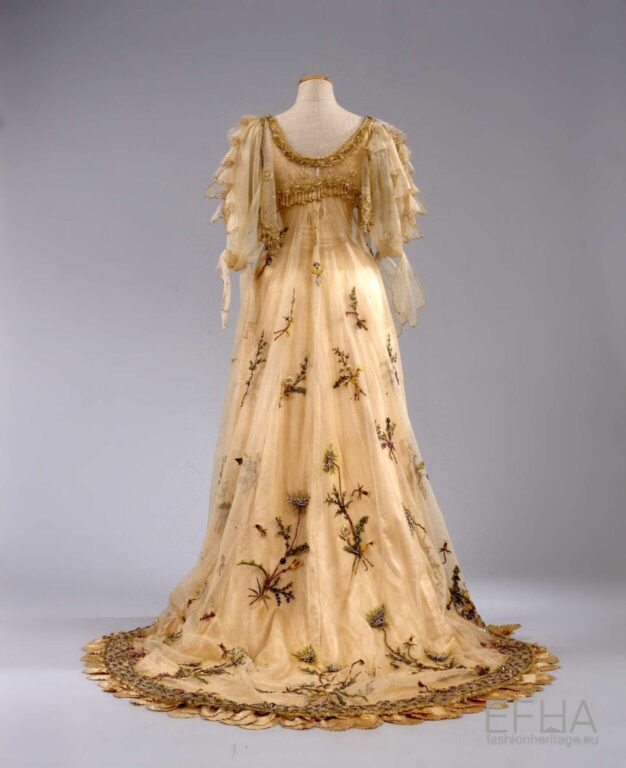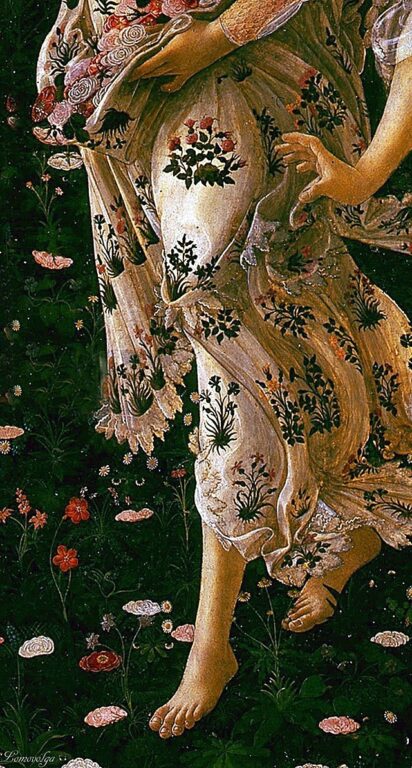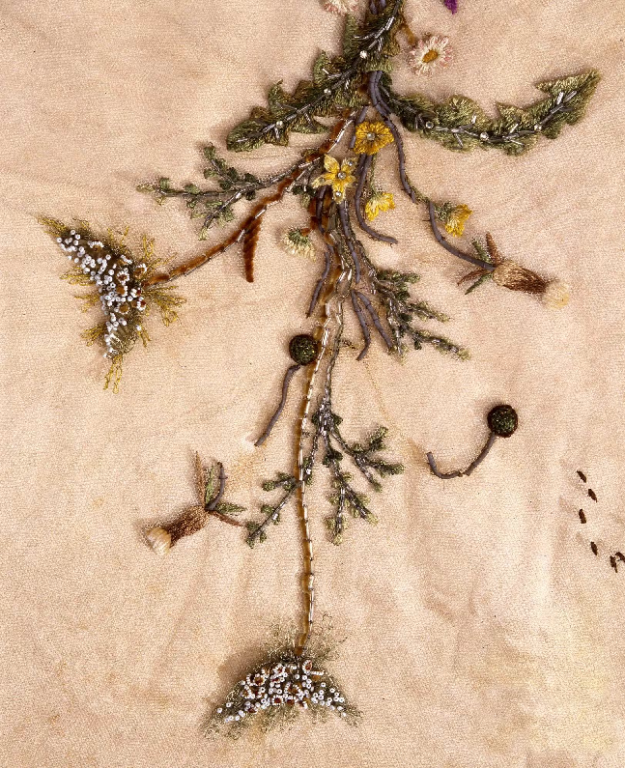Rosa Genoni: a pioneer of Italian fashion inspired by Botticelli

Rosa Genoni, La Primavera dress 1906 (Detail ).The Pitti Palace, Florence, Italy. Public domain via WikiCommons
…Armani, Cavalli, Fendi, Gabbana (and Dolce), Valentino, Gucci, Prada, Versace, Schiaparelli… today, when the names of Italian fashion designers slip easily off the tongue, it’s difficult to recall that there was a time when Italian fashion was overwhelmed by the all-conquering haute couture of France. A century or less ago, Milan couldn’t hold a candle to Paris.
One of the prime movers in the in the founding of a truly Italian fashion style was a woman who was not only a fashion designer, but also a political activist and a campaigner for women’s rights. Born in 1867, Rosa Genoni started work at the age of 10 in a relative’s dressmaker shop in Milan. She rose rapidly to prominence as a designer, first in Italy and then in France, where she worked for several renowned Parisian fashion houses.
Returning to Milan in the late 1880s, Rosa determined to promote Italian fashion and its close links with the country’s artistic heritage. One of her most outstanding designs was the La Primavera dress (above), inspired by Sandro Botticelli’s famous painting, and in particular, the dress of Flora, goddess of flowers, spring and fertility (below).

Sandro Botticelli, Primavera (Allegory of Spring), Flora detail, c. 1480, The Uffizi Gallery, Florence, Italy, Public domain via WikiCommonsr
Now in the Pitti Palace in Florence, Rosa Genoni’s sheath dress with a trumpet bell skirt and draping of tulle embroidered with plant and floral designs, was shown for the first time in 1906, at the International Exhibition in Milan. The Pitti curators call it: “…an extraordinary example of the creative genius of Rosa Genoni, who is credited with founding Italian fashion. Her technical experimentation merged perfectly with the quest to create a style and shapes that could be defined as authentically Italian. Rosa Genoni’s ambitious project to redefine Italian costume finds its roots in Italian art history and especially in the Renaissance.”

Rosa Genoni, La Primavera dress 1906 (Detail).The Pitti Palace, Florence, Italy. Public domain via WikiCommons
At the Watermill, we too have been inspired by Italian art and architecture, and we have named all our bedrooms after famous Italian artists. The Botticelli bedroom, on the first floor of the Tuscan house, is an elegant, dual-aspect bedroom, with a balcony and an en suite shower room. It has wonderful views over the courtyard and gardens to the mountains beyond.
